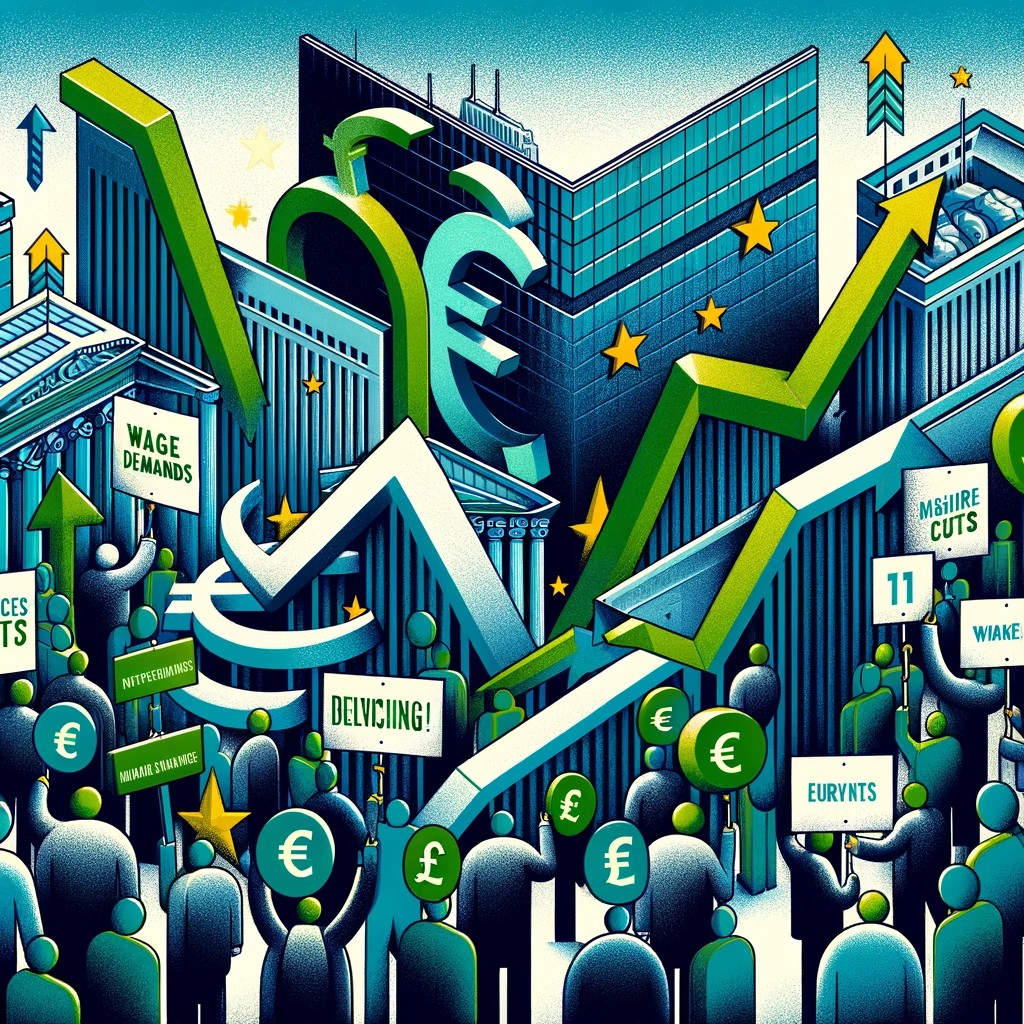As Europe grapples with the complexities of its economic landscape, a looming question overshadows the anticipation of interest rate cuts: Could the rising demands for higher wages among European workers throw a wrench in these plans? Analysts are sounding the alarm, indicating that these escalating wage demands pose a significant threat to the timing and feasibility of these anticipated cuts.
The Tug of War Between Wages and Rates
The European Central Bank (ECB) stands at a crossroads, with its policymakers voicing concerns over the rapid wage growth and its potential to fuel inflation. As we glean insights from the World Economic Forum in Davos, it’s clear that key figures like Christine Lagarde and Gita Gopinath of the IMF are wary of the implications of hasty rate cuts amidst these wage pressures. While the idea of a rate reduction in the summer months seems to be gaining traction, it’s the burgeoning wage growth that poses a stubborn barrier.
This tension is palpable in Germany, where the IG BAU union’s demand for a substantial wage hike for construction workers sets a precedent that could ripple across Europe. Tomasz Wieladek, an economist at T Rowe Price, points out that even a moderated version of this demand could bolster the ECB’s apprehension about entrenched inflation, affecting the pace of rate reductions.
Eurogroup President Paschal Donohoe echoes this sentiment, emphasizing the critical need to tackle inflation, lest it becomes entrenched in European economies. This journey, though arduous, is necessary for financial stability.
Navigating the Inflation Conundrum
Europe’s battle with inflation is far from over. While there’s been a noticeable decline in inflation rates in major economies, the persistently high inflation in service sectors is a cause for concern. Mark Cus Babic from Barclays highlights the lag in Europe’s wage-setting process, suggesting that wage contracts yet to be renegotiated could settle at higher rates, thus perpetuating inflation concerns.
Lagarde’s recent remarks about needing more time to assess wage pressures have already sent ripples through the financial markets, shifting expectations for rate cuts from March to April. This cautious approach reflects a broader trend where central banks, including the ECB and the U.S. Federal Reserve, are weighing the risks of rate cuts against the need to curb inflation.
Interestingly, in the UK, there are signs of wage growth easing, but analysts predict that the Monetary Policy Committee will seek more definitive evidence of diminishing pay pressures before considering rate cuts.
Across the Atlantic, the focus is slightly different, with concerns about the labor market taking precedence over inflation. However, there’s also a growing sentiment that higher wage growth might be necessary to align workers’ earnings with pre-pandemic levels.
Back in Europe, the ECB’s upcoming meeting is being closely watched, with many eager to decipher any hints about the timing of rate cuts. Christine Lagarde’s recent comments at a Bloomberg News event in Davos, acknowledging the ECB’s caution in managing borrowing costs, reflect the bank’s delicate balancing act between controlling inflation and not stifling economic growth.
The speculation about rate cuts has already influenced stock market trends, reflecting the intricate relationship between monetary policy and market dynamics. However, as Europe navigates sluggish economic growth and the effects of high interest rates, the anticipation of rate reductions remains entangled with the uncertainties of wage dynamics.
As the ECB convenes to deliberate its next steps, the eyes of the world are fixed on how it will navigate these choppy waters. The key challenge remains: balancing the need to keep inflation in check without derailing economic recovery, all while wrestling with the realities of wage demands that refuse to be sidelined. In this complex equation, the timing and nature of interest rate cuts in Europe hinge not just on economic indicators but also on the resolve of its workforce to secure fair compensation in an ever-evolving economic landscape.





